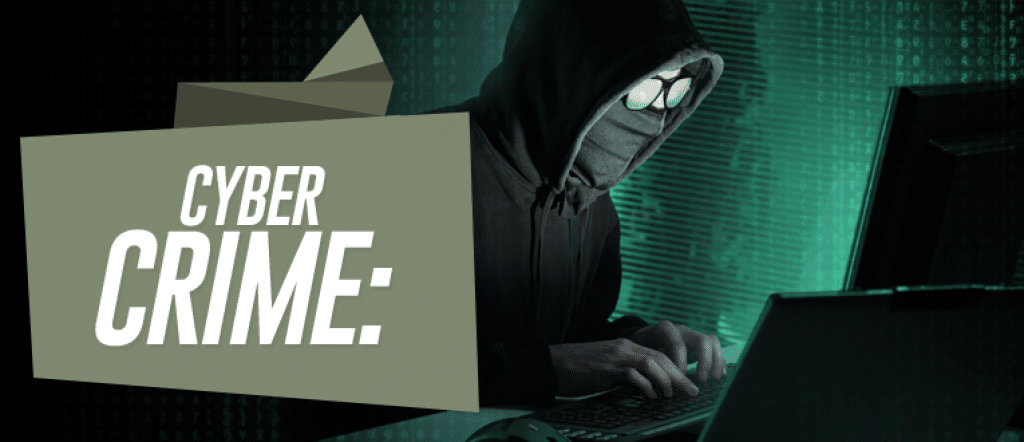Cyber Crime
Cyber Crime is any crime committed using a computer and a telecommunication network.
The target could be another computer, with the intention of stealing information, completely damaging the system, or taking over it.
The target could also be individuals, like in cases of fraud and identity theft through phishing and social engineering.
In all these cases of cyber crime, the perpetrator of the crime operates from another computer system, connected to the victims computer over a network.
The perpetrator can either be an individual, a small criminal organization, an international organized crime group or a special government sanctioned unit.
Types of Cyber Crime
Generally, cyber crimes can be grouped into two broad types: High-tech cyber crimes and cyber-enabled crimes.
High-tech cyber crimes mostly involve sophisticated computer attacks over a network, especially the Internet.
These attacks generally target and exploit software or hardware vulnerabilities in order to gain access to the system for information theft or espionage or to incapacitate the target computer.
This type of cyber crime is carried out mainly by elite hacker groups or by special government cyber-warfare squads.
Cyber-enabled crimes are crimes which have previously existed before the advent of the computer and the Internet.
But they can now be taken to a higher level of sophistication, execution speed, and profit possibilities using the Internet.
The most popular cyber-enabled crimes include identity theft, fraud, ransomware and phishing.
Identity theft and Cyber Crime
Identity theft, for example is the deliberate use by a perpetrator of another person’s name or identity.
Usually, this is with the intention of making financial gains or obtaining some other benefits or credit in the victim’s name.
The most common incidences of online identity theft include database breaches by hackers who break into the websites of governmental organizations or large corporations and steal information of users.
They then either use the data themselves for malicious purposes, or they sell them to other fraudsters.
Using a person’s stolen credit-card information online, the hacker can go on a shopping spree, thereby accumulating debt for the victim.
In cases of stolen financial login information, the data thief will usually try to clear out the victims accounts.
Withdrawing or transferring their bank balances through money mules.
Apart from financial information, many other types of personal information are also stolen to be used for malicious purposes.
These include passport numbers, date-of-birth, passwords, biometric-data (iris scans, fingerprints), social security number and health insurance information.
A 2015 identity fraud study revealed that for the year 2014, about $16 billion was stolen from over 12 million U.S. consumers.
This meant there was a new victim of identity fraud every two seconds.
A further assessment reveals that the major misuse of victim’s data was for government or benefits fraud, which accounted for 38% of cases, and credit card fraud with 17%, then utilities/phone fraud 12%.
Have you heard of the dark web?
A major facilitator of cyber crime is the dark web.
The dark-net is a part of the Internet which is not displayed by the search engines like google and bing and is not accessible to most Internet users.
The dark-net is a collection of websites using different types of encryption to shield themselves from the open Internet.
While most of these sites are not dangerous, a few of them definitely are.
Users can buy illegal drugs that are delivered through mail, buy and sell untraceable firearms, sell credit-card information and other personal data like passports, ID cards and lots more.
Many transactions are carried out using the crypto-currency Bitcoin, which makes transactions untraceable and is therefore the preferred currency for persons offering cyber crime services.
In most cases, cyber crime can be quite difficult to investigate, therefore it is the duty of each person who uses an Internet connected computer to secure his or her identity online.
Strengthen your passwords
This can be done through the use of stronger passwords which must include upper- and lowercase letters, plus numbers and a few special characters.
Such a password is almost impossible for even a super computer to break under an hour of intensive computing, so criminals often move on.
It’s also important to use different passwords for different accounts, because it’s a standard cyber crime practice to try out all of a person’s online accounts using the one password that is confirmed to be working.
The last thing to do is to ignore all emails requesting that you verify your account information.
This is called phishing, and is mostly used to steal information, especially financial information.
As a rule, most financial institutions never call their clients to request a verification of their login data.
Links:
- https://en.wikipedia.org/wiki/Cybercrime
- http://www.interpol.int/Crime-areas/Cybercrime/The-threats
- http://www.iii.org/fact-statistic/identity-theft-and-cybercrime
- https://www.fbi.gov/about-us/investigate/cyber/identity_theft/identity-theft-overview
- https://staysafeonline.org/stay-safe-online/protect-your-personal-information/id-theft-and-fraud

